First, here’s the things to know about me that will help you appreciate this post:
- I love commercials. I love commercials more than TV shows. And, I certainly find Superbowl commercials more entertaining than the game.
- I recently became a certified chainsaw instructor with a nonprofit organization called Team Rubicon.
- I grew up on a dairy farm in Upstate NY, which is decidedly NOT the same as Downstate NY or New York City. New York is actually a decent sized state that holds the nation’s largest national park as well as lots of small towns and farms.
First the beer, then the chainsaws.
Budweiser “leaked” their now-famous Superbowl puppy ad well in advance of the game.
It went viral as intended, with 24 million+ views. It’s definitely cute, but does it sell beer? Not directly, but I’ll cover that in a minute (and the reason this ad was the one that was released early).
We’re not going to talk about that ad today. We’re going to talk about the “other” Budweiser ad, that’s causing quite a stir in the beer community. This is some of the best copy I’ve seen in a TV ad… ever. And today, I’m going to break down why it works and what you can learn.
First, an aside about copywriting. I don’t write copy for TV or print ads. There are two main types of copywriters and I’m the other one.
- Ad writers create copy for things like billboards, magazine ads, and TV (except infomercials). Their goal is generally brand awareness and brand recognition. They want you to REMEMBER them. When you’re driving down the highway and get hungry, they want phrases to be stuck in your brain like “Yo Quiero Taco Bell” and “Where’s the Beef?” When you go to buy car insurance, they want Flo the insurance lady, or the “hump day” camel to come to mind. It’s a lofty goal and really tough to measure.
- Direct Response copywriters (like me) write copy for things like donation letters, sales pages, infomercials — any thing where at the end, you need to be taking action (buy, donate, subscribe, fill out this survey, etc.). I don’t much care if you remember me when you’re driving down the highway, I need you to take action at the end of this page.
Ok, back to the beer. We’re going to talk about the ad with 1/8th the views:
Let’s break it down, shall we?
Opening sequence. Budweiser factory with a big ole American flag. Unlike the puppy ad, there’s no question this is going to be about beer. Hey football fans, we’re going to talk about us for a second, that cool? Plus… ‘Murica!

Push/Pull. The next two images are some grains and hops and stuff. Now that we’ve established that we love America and beer, they are softening it up to say “natural” and “wholesome.” This is a classic push/pull approach. You can’t be all in-your-face all the time. There’s a reason good cop/bad cop is a cliché — because it works. You want to be aggressive and empathetic at the same time. You’ll see this a lot in this ad — pictures of the factory juxtaposed with images of a hopping bar scene. If you spend too much time in the bar, or too much time behind-the-scenes, you’ll lose your audience quickly.
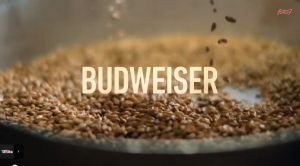
“Hidden” messaging. This is where it gets interesting. There’s some dissonance here between the images and the text. This is the image that leads up to Budweiser declaring that they are the big boys and proud of it. But, the image used for “Proudly” doesn’t match that. You have one pair of hands carefully selecting hops. So, what happens when what you read doesn’t match what you see? Answer: you believe the image. You don’t even know you’re doing it. But, you are seeing Budweiser as handcrafted, even as they are telling you it’s not.
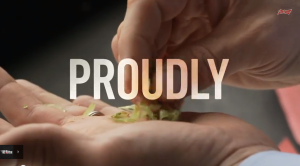
Addressing Objections. This is where my eyes perked up. “Proudly a Macro Beer.” Wait. Isn’t that a bad thing? By addressing objections up front, you’re taking power away from your haters. “Macro Beer” is term that microbrewers and craft beer connoisseurs use to dismiss big brewers like Budweiser. Now, Budweiser owns that term. In this one frame, they are saying, “Yeah, we’re bigger than you. So what?”
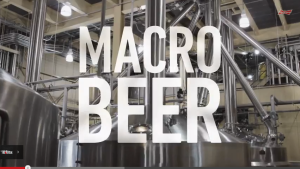
Decompression Zone. Budweiser just made a big statement that most people need a second to process. So, they run a series of images: blue collar guy, Clydesdale, and bar scene. This serves two purposes. First, they want you to remember who they are — blue collar, friendly (remember the horses and the puppy), and social. Second, and more importantly, they are giving you a second to absorb the “Macro Beer” declaration. In retail, this is a “decompression zone.” You have to take a minute before you enter a store to get into the shopping mindset. Budweiser is getting you in the mindset to watch the rest of the ad.
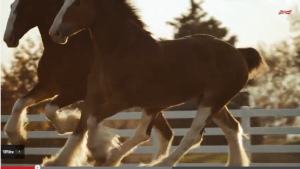
Us vs. them. The next sequence draws a crystal clear line in the sand with the declaration, “It’s not brewed to be fussed over” with an image of a ridiculous looking hipster with his nose in a beer.
This technique may be the biggest copywriting tool in my arsenal and it’s the crux of this entire ad. Budweiser created an “in group” and an “out group.” It’s extremely powerful and if you look for it, you see it EVERYWHERE: Infomercials (“The old way”) Paper towel ads with the side-by-side shots, testimonials, viral blog posts about “mommy wars,” the list goes on and on.
Why does it work?
- Everyone wants to be the cool kid.
- It adds tremendous credibility to say, “this is who we’re not for.” You’re not desperately trying to sell to everyone — only “special” people, and dammit, I want to be special. Clearly, Budweiser is not trying to win over hipster beer connoisseurs or their already raving fans, they want the casual drinkers in the middle to pick a side. (Derek Halpern explains it best here)
- You want to piss people off… because then they’ll talk about you more. Check out this article breaking down all the “responses” to the ad. Do you know what this does? A 1-minute ad is now lasting for weeks in internet land. Thanks, haters!
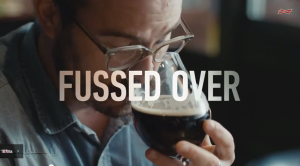
Credibility markers. Now that Budweiser has created side, they want to make sure you pick the right one. So they do this next. I don’t know what’s going on in the first image (“For a”), but it looks super advanced and technical. They could be cleaning the tank for all I know, but it shows they know stuff about beer that I don’t.
Then there’s some images of people at bars — back to push/pull and reminding you why you drink beer in the first place
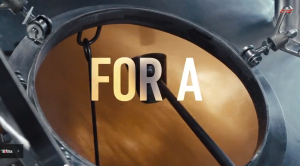
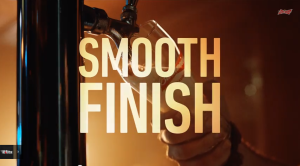
Here’s one of my favorite parts: “The only beer, Beechwood aged.” Super impressive, right? I have no f’ing idea if that’s good. Is beechwood better than oak or pine or whatever those “other” companies do? Well there’s some trees and axes and wood and stuff, so it must be.
They are being ambiguous on purpose. We don’t know what the other breweries are doing, but we automatically assume it’s bad — even though Budweiser never said that!
This is another copywriter trick you can see all the time if you try. It’s doing 2 things:
- Differentiating without being different. If you have a product that’s essentially the same as everything else, how do you create a Unique Selling Proposition? Talk about something nobody else talks about. M&Ms is the most famous for this: “melts in your mouth, not in your hand.” Other candy coated chocolates could say the same, but once M&Ms owned it, what are they going to say? “Ummm… us too?”
- Information overwhelm. You see this ALL the time on food boxes, “good source of omega 3s” “low saturated fat” “high dietary fiber” “B12 enhanced”… most people have no idea what that means or how it affects the body, but it’s on the box, so it must be good, right? The other cereal doesn’t say that, so I’m getting the high-zinc one, because I’m healthy!
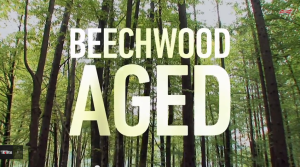

Since 1876 — total credibility marker. If you pay attention, you see this one sneakily inserted all the time. When you hear someone say, “when I did this 10 years ago,” or “in 2010 when I started this site,” they are differentiating. “We’re not a fad.” This is especially good timing as people start to talk about a “craft beer bubble,” or even ask is craft beer the new cupcake?
SIDE NOTE: Motley Fool, a site known for amazing copy, recently did an article about threats to craft beer. You should read it, then subscribe to them. They have some of the best financial copy around.
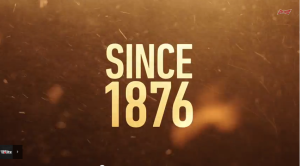
Scarcity. This is another key copywriting principle. If you’re readily available, the demand goes down. So, how can Budweiser create scarcity when you can get their beer anywhere? Again, by differentiating. “There’s only one Budweiser.” The implied end of that sentence is “and thousands of craft beers.”
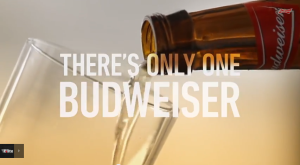
Stronger Us versus Them. Budweiser has planted the in/out group seed here, but this is where it gets abundantly clear. Besides the words, check out the images here. Which group do you want to be in?
This is so effective with the current culture around beer. I’ve been in a bar and seen people scoffed at for ordering a “macrobrew” when craft brews are on tap. My favorite restaurant doesn’t even offer big-box domestic beers. It’s cool to drink craft beer, and Budweiser knows it. So, they are redefining and reclaiming cool.
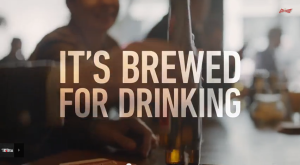

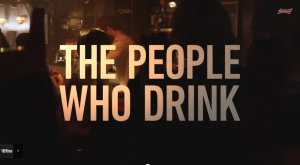
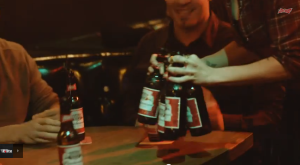
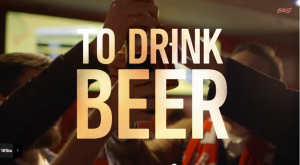
Ambiguity bias. After this ad, I kinda “get” how Budweiser is made, at least to the extent they want me too. There’s hops, grain, big tanks, a guy with an axe, some shiny machines, and some fire. Looks industrial AND crafty and natural all at the same time. Looks hard. Looks complex. So, when they say, “brewed the hard way,” I buy in.
This is a classic copy build-up. If they had opened with, “we brew beer the hard way,” there would be instant resistance. But, they’ve subtly made the argument during the last 45 seconds and we’ve agreed without even knowing it.
Stand up comedians like Louis CK are masters at this — getting you to buy in to a premise you never would by first getting you to buy-in to other things earlier.
Here’s a study from Robert Cialdini’s book Influence (a must-have copy resource) on this principle, the “rule of consistency.”
Strengthening the “Us.” Here’s another key shift in the ad. We go from “people who like craft beer” and “people who like Budweiser” to “them” and “we.” We’re on a team now. We’ve established that hipsters are bad and we are good. So now, they offer us a final rallying cry to declare our coolness. Hooray for the in group!
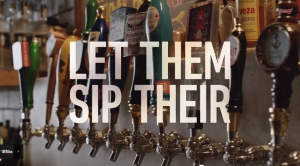
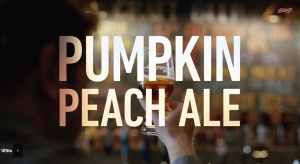
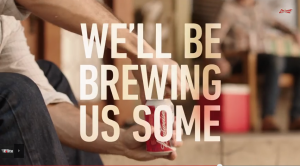
Re-establish Trust. The ad closes out with some final credibility markers. See us? You can trust us because we’re famous and there’s some old images of horses (REMEMBER HOW THE HORSES PROTECTED THE PUPPY!? We’re totally trustworthy).
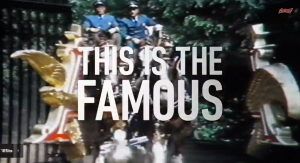
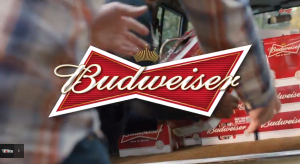
Final ego stroke and we’re on our way. You’re awesome, we’re awesome. And, cheers to you, friend. Remember, we’re on the same team here.
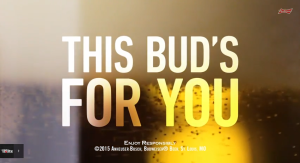
So, what does this mean for you?
Other than wanting a beer now, craft or otherwise, you can apply the major principles at work here to just about anything. I’ll show you what I mean with… chainsaws.
I recently attended a “train the trainer” chainsaw instruction class in Southern California. There was a wide variety of people there from loggers, to arborists, to wildland firefighters, and then there was me. I was the only female and the second-youngest person there.
We’re going to talk about the first-youngest, George. As chainsaw instructors, George and I have a lot in common — except he’s an amazing chainsaw mechanic and I have a very basic understanding of how chainsaws work (i.e. they need gas to run).
Anyway, George is 25 with the face of a 15-year-old. I’m 29 and female. We face the same issue — credibility. Our stature and our age work against us. We’ll be instructing a required class on chainsaw safety, so there is almost a guarantee we’ll be teaching people with more experience running a chainsaw than us.
So how do we convince people with more experience and knowledge that they should listen to us?
Our fantastic instructor recognized this issue so he set up some scenarios we might face. In one scenario, the “student” played a retired logger who refused to wear a face shield, part of the required Team Rubicon personal protective equipment.
George was up first. After George asked the student to put on his face shield, he responded, “I’ve been cutting a long time and I’ve never worn a face shield.”
George answered, “I’ve been cutting a long time too, but that’s just the way it is.”
Do you see the problem here? The scene instantly escalated. This guy had been operating chainsaws longer than George or I had been alive and he’s not going to be told what to do by some kid.
So here’s how George’s second run went:
- “I totally get that” [Agree up front]
- “And I know you’re experienced, so you can probably do it safely” [Ego stroke and address objections]
- “But see Abbey over there, she’s new to chainsaws.” [Create an “other”]
- “She doesn’t have the reaction time or muscle memory to protect herself if something goes wrong.” [Further deepen the “us vs. them”]
- “If she sees us doing it wrong, so will she.” [Solidifying the “us” — we’re in this together]
- “So can you wear it so that the newer people learn correctly and we prevent injury?” [Rallying cry and a call for help — I need you]
Now the guy has no choice but to agree. We’re on the same side now. You can do this in all sorts of scenarios — when your boss has a terrible idea for process improvement, when your kids don’t want to get their coats on, when your friends insist on just “one more drink.” By creating an “us vs. them,” people have to chose sides — and they want to choose yours.
So let’s play a game. Leave a comment below with one way you can create an “us vs. them” scenario. Play it out using your new beer and chainsaw copy lesson and I’ll leave feedback on how you can make your persuasion even stronger.

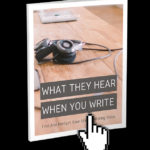
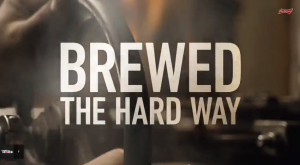
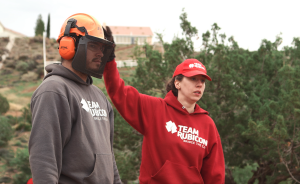
Love the post!
When patients don’t want to leave the hospital (but should be able to):
I completely understand that you want one more day because of your pain, I would too
You have been doing so well, I am sure you will feel ready tomorrow
But the hospital is for sick people, not healthy people like us
You had elective surgery, not pneumonia or a bad infection
The sick people have to stay here, you and I get to go home where we will get better rest and stay away from sick people
Don’t you think you would have less pain if you could be in your own bed at home getting the rest you deserve after a surgery like this?
For students who don’t want to work on their personal statement:
I too once thought a personal statement doesn’t matter
And you possibly have the extracurriculars to get away with not putting the time into one
But that is how everyone feels, especially the people who don’t get into medical school
It is that type of mindset that leads other students to believe they are the whole package when in reality they have a few strengths – not enough to get into medical school
People who do not get in to medical school do not systematically strengthen each part of their application
By taking the time to strengthen our personal statement, we can make sure you stand out from the other students and get noticed like we should
Awesome, Travis. I love what you did here in both examples. The hospital one particularly. When it comes to people’s bodies, they are particularly difficult to persuade, largely because there’s nothing more personal and it’s easy to say “he (the doc) doesn’t understand.” Someone in your position can easily become the “other.”
The most compelling part for me was the “sick people.” This makes a great “other” because so many ways to separate your healthy patient from them. Another good fear is “becoming the other.” It doesn’t apply in my examples above, but once you create an us vs. them, the last thing the person wants to be is in the other group. “Healthy people like us should be home where we can rest in our own beds — and I’d hate for you to get stuck here longer than you have to because of poor rest or coming in contact with someone.” (Now that I’ve typed this out, not sure the hospital administration would love that approach haha, but you see where I’m going.)
For the medical student, I think a good “other” is the guy that’s less qualified than you that gets the residency (I think that’s what they’re after here, correct me if I’m wrong) because of a strong personal statement. From what I know, med students tend to be super competitive so I think it would work well for you.
Ex.: “You possibly have the extracurriculars to get away with not putting in the time, but can you imagine that guy in your class that hasn’t busted his ass the last 4 years like you getting in over you because he spent a few hours on the statement? That was what drove me to really start focusing. I’d hate to have all that you’ve put in to this point to go unnoticed because of one weak section of your application.”
Great feedback, I really like the way you exposed the true “other” in medical school. Very powerful. That “other” student was me to a certain degree (I still worked hard, I just focused on what really mattered when it came down to getting into residency and medical school).
AWESOME post Abbey! So stoked you’re writing!
Let me take a stab….
[For guys who are thinking of enrolling in a high-end dating coaching program]
Sure, you could be like all your naysayer buddies, who think you don’t have to study or practice to become good with women.
“Just talk to her dude” they say. (Great advice.)
Or “Just be yourself”
Take an honest look. What kind of results are these guys getting?
Do you *really* want to leave your romantic life to chance, like they do?
Is getting plastered and hoping to “get lucky” *really* the best strategy?
How’s it working out for them?
Do you REALLY think you’re going to meet your future wife by going to random meetups, or joining a kick-ball league?
Hey, I totally get it: I didn’t want to have to learn social skills, either. (How weird).
But the fact is, most men aren’t taught by fathers or older brothers anymore (I wasn’t).
We’re just left to our own devices.
Look, you could spend the next 10 years of your life floundering around using the “get lucky” method ….and suffering all the missed opportunities, mistakes and bad relationships that come with it…..
Or you could invest in yourself, spend one intense week-long period dialing in the proper behaviors and attitudes, and make the mental shift that will propel you to choice & control in your romantic destiny.
You invested in yourself to get the skills necessary to get your current job.
You even invest in yourself with continuing education to stay current with your industry.
Why not invest in your presence, charisma, and influence — something that touches every part of your life?
Your friends might not “get it.”
But they’re not going to get the results you’re going to get, either.
And anyway, if you take this program, apply what I teach, and practice consistently, before too long …they’ll be asking for YOUR advice.
= = =
P.S. Happy Belated Birthday!
Hey Andrew! Sorry I missed this comment before. Love the “other” of the friends. “How’s that working out for them?” So powerful. Isn’t it true that’s what we do? Listen to our friends, despite their results.
One way to pump up the emotion is when you talk about the advice, “just talk to her” and “just be yourself” — what does that even mean? How do you do it? Have you ever walked into a social situation with “just be yourself” and been comforted or confident in that approach?
Also, remember the key to this method is that we want to be careful not to insult our prospect or make them think that THEY might be the outgroup. That puts up the defenses quickly. I’m not sure that you do that here, but you come close. Think of the Budweiser ad. They insult hipster craft brew fans because they know that those people will never buy. In the process they’re targeting the undecideds in the middle. You want to make it clear, in this case to these guys that it’s not THEIR fault — they either weren’t taught (fathers and brothers line) or were taught all wrong by well-meaning people (friends). It’s not that they’re dumb or their approach is stupid, it’s that nobody taught them otherwise… but once they’re “in”… they’ll have the skills to talk to people consistently, every time.